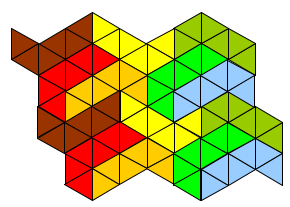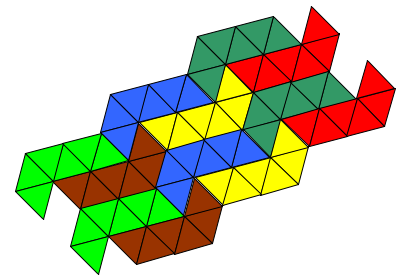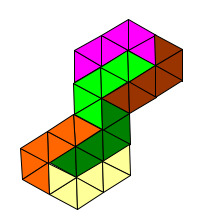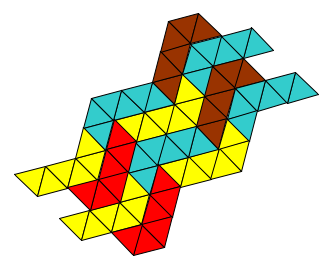Copyright © University of Cambridge. All rights reserved.
'Tessellating Transformations' printed from https://nrich.maths.org/
Show menu
Why do this problem?
I cannot recommend this activity too highly; you should try it for yourself. When you do so, notice all the confusions that arise about which way up the shape should go to "fit in". These confusions provide motivation for lively discussion between pupils (where they will need to use relevant mathematical vocabulary) and a great deal of
hands-on trial and improvement.
Possible approach
Present the children with some equilateral connecting triangles. Then set them the problem showing them the examples on the site. It is also very worthwhile to look at using other basic 6-triangle shapes. Some have lots going for them and others are not so good, but this in itself is useful to talk about with pupils as they try other shapes.
Here are two to be going on with that I tried:

At some stage you may reach a definition for "tessellation" that the children come up with and find useful when deciding if a pattern is ok or not.
Key questions
Tell me about the shapes that you've made.
Possible extension
An extension would be to use two different basic shapes to tessellate with and discuss the advantages and disadvantages of doing this. At some stage you may reach a definition for "tessellation" that the children come up with and find useful when deciding if a pattern is OK or not.
Possible support
Some pupils may need help manipulating the triangles spme computer programs may be helpful.




